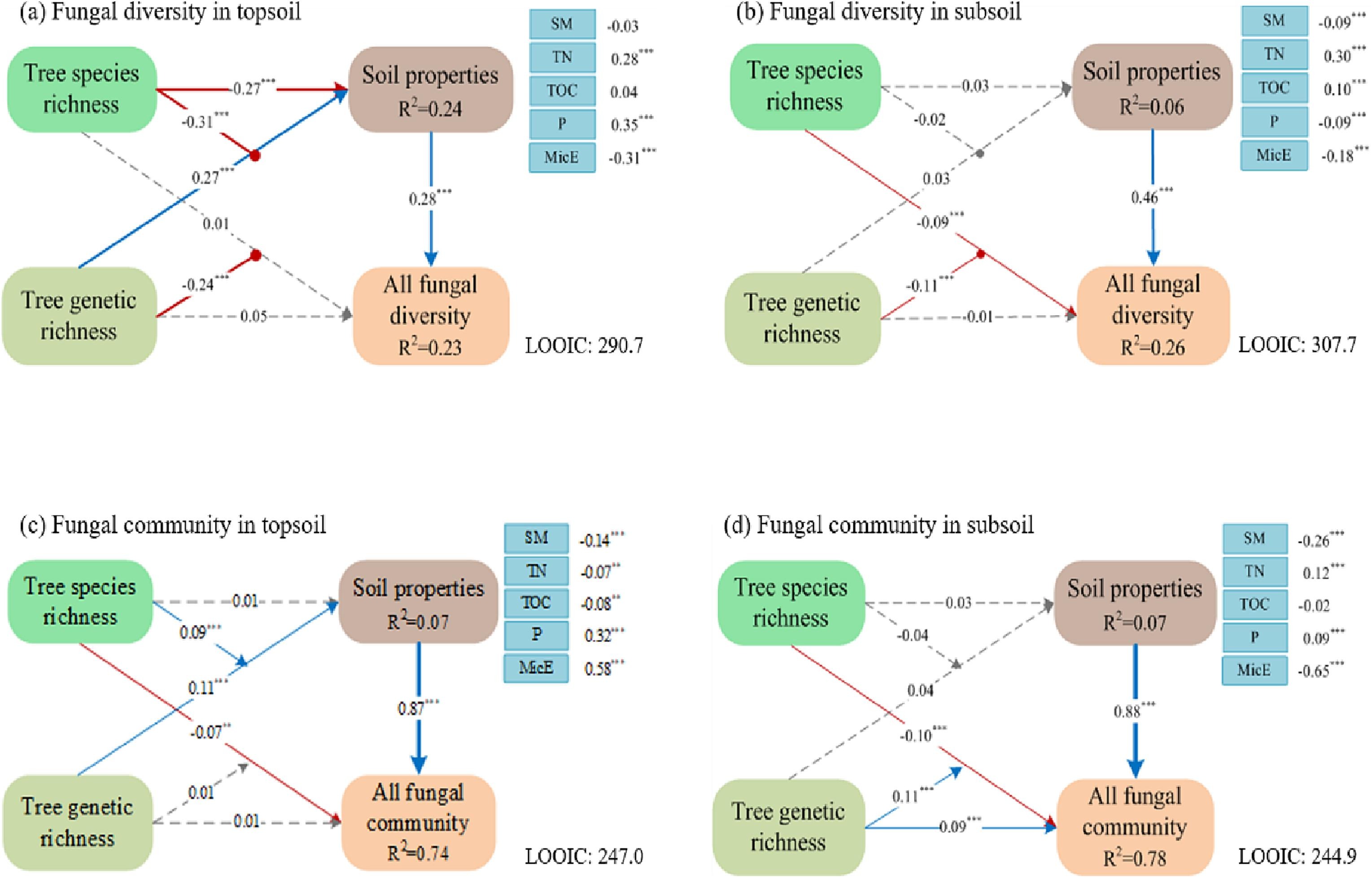Plant diversity plays a critical role in shaping soil fungal communities. However, most previous studies have primarily focused on the consequences of tree species richness, while few studies have attempted to elucidate the effects of tree genetic richness on soil microbial diversity, especially between the interplay of tree genetic and species richness. Therefore, it is essential to gain more insight into the pattern and potential mechanisms underlying the influence of genotypic variation and intraspecific diversity on soil fungal communities in monocultures as well as in species mixtures.
In this study, we employed a DNA metabarcoding approach to analyze the fungal functional guilds in soils, as well as to determine environmental properties in a large experiment where tree species richness (species monocultures or four species mixtures) and within-species genetic richness (one or four seed families per species) of subtropical trees were factorially manipulated.
We found a positive effect of intraspecific genetic richness on soil fungal alpha diversity in monocultures, which could be attributed to the additional resources available from existing tree individuals. However, in species mixtures, we observed a contrasting effect of genetic richness on fungal alpha diversity, likely resulting from competitive niches and selection effects (Fig. 1). Additionally, we found that tree species richness played a significant role in shaping soil fungal community composition, suggesting that plant interspecific variation may be more critical for structuring soil fungal communities than intraspecific genetic richness (Fig. 2, Fig. 3). Furthermore, our study indicates that the variations in resources input and abiotic factors derived from tree richness or genetic richness contribute to shaping soil fungal communities in topsoil and subsoil (Fig. 3).

Fig. 1 Effects of tree species richness and genetic richness on soil fungal diversity in the topsoil and subsoil.

Fig. 2 Associations of soil fungal community composition with soil properties variables in the topsoil and subsoil based on dbRDA.

Fig. 3 Bayesian SEMs accounting for the direct and indirect effects of tree species richness, tree genetic richness, and soil properties on fungal diversity and community composition in the topsoil and subsoil.
Literature:
Hong Lin, Sirong Zhang, Xiaojuan Liu, Keping Ma, Naili Zhang*. 2023. Subtropical forest tree genetic richness causes contrasting effects on soil fungal guilds in monocultures and mixed-species stands. Forest Ecology and Management. 545:121285. https://doi.org/10.1016/j.foreco.2023.121285.

